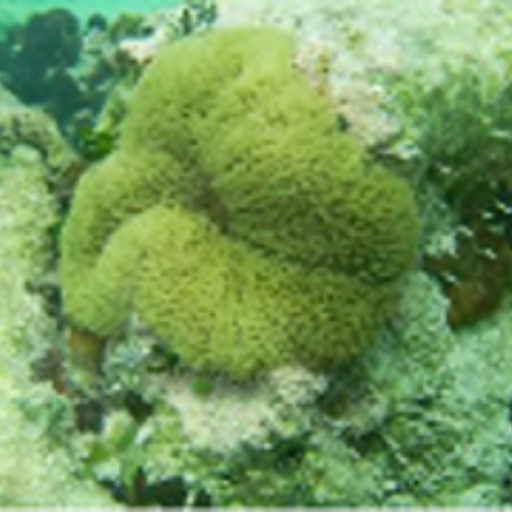RESTORATION OF VICTORIA POND WETLAND HABITAT IN HISTORIC GEORGE TOWN, GREAT EXUMA FOR SUSTAINABLE MANAGEMENT TO CONTROL POLLUTION AND ENHANCE NEAR SHORE FISH HABITAT (BAHAMAS)




Description
Location


Sketch

Information about lithology/geochemistry:
A small carbonate sediment island
Main Description
- Great Exuma is the largest island in the Exuma island chain, with just fewer than 8,000 people living on the island in six major settlements. George Town is the largest and oldest settlement, located at the southwestern shore of Elizabeth Harbour. Victoria Pond is the largest wetland complex in Elizabeth Harbour;
- Ecosystem services are linked to coastal ecology – protection of near-shore environment to support fish production and reduce flooding in George Town – degraded by the destruction of coastal wetlands (mangrove habitats).
- There is one on-going program involving the restoration of Victoria Pond called Ramsar Caribbean Wetlands Initiative.
Enhance ecohydrological processes in novel ecosystem
YES
Apply complementary Ecohydrological processes in high impacted system
YES
This table presents the different categories of ecosystem services that ecosystem can provide, divided in:
Provisioning Services are ecosystem services that describe the material or energy outputs from ecosystems. They include food, water and other resources.

Food: Ecosystems provide the conditions for growing food. Food comes principally from managed agro-ecosystems but marine and freshwater systems or forests also provide food for human consumption. Wild foods from forests are often underestimated.
Regulating Services are the services that ecosystems provide by acting as regulators eg. regulating the quality of air and soil or by providing flood and disease control.

Carbon sequestration and storage: Ecosystems regulate the global climate by storing and sequestering greenhouse gases. As trees and plants grow, they remove carbon dioxide from the atmosphere and effectively lock it away in their tissues. In this way forest ecosystems are carbon stores. Biodiversity also plays an important role by improving the capacity of ecosystems to adapt to the effects of climate change.

Moderation of extreme events: Extreme weather events or natural hazards include floods, storms, tsunamis, avalanches and landslides. Ecosystems and living organisms create buffers against natural disasters, thereby preventing possible damage. For example, wetlands can soak up flood water whilst trees can stabilize slopes. Coral reefs and mangroves help protect coastlines from storm damage.

Waste-water treatment: Ecosystems such as wetlands filter both human and animal waste and act as a natural buffer to the surrounding environment. Through the biological activity of microorganisms in the soil, most waste is broken down. Thereby pathogens (disease causing microbes) are eliminated, and the level of nutrients and pollution is reduced.
Ecosystem services "that are necessary for the production of all other ecosystem services". These include services such as nutrient recycling, primary production and soil formation.

Habitats for species: Habitats provide everything that an individual plant or animal needs to survive: food; water; and shelter. Each ecosystem provides different habitats that can be essential for a species’ lifecycle. Migratory species including birds, fish, mammals and insects all depend upon different ecosystems during their movements.
Cultural Services corresponds nonmaterial benefits people obtain from ecosystems through spiritual enrichment, cognitive development, reflection, recreation, and aesthetic experiences.

Recreation and mental and physical health: Walking and playing sports in green space is not only a good form of physical exercise but also lets people relax. The role that green space plays in maintaining mental and physical health is increasingly being recognized, despite difficulties of measurement.

Tourism: Ecosystems and biodiversity play an important role for many kinds of tourism which in turn provides considerable economic benefits and is a vital source of income for many countries. In 2008 global earnings from tourism summed up to US$ 944 billion. Cultural and eco-tourism can also educate people about the importance of biological diversity.

Aesthetic appreciation and inspiration for culture, art and design: Language, knowledge and the natural environment have been intimately related throughout human history. Biodiversity, ecosystems and natural landscapes have been the source of inspiration for much of our art, culture and increasingly for science.
Lifezones

![]()
PPT(mm/yr): 570.0
![]()
T(ºc): 22.0
| Elevation of demosite: | 0.0 meters above sea level |
| Humidity: | Sub-Humid |
| PETr (by year): | 2.27 |
EH Principles
Distribution of ecosystems and their relevant processes (ex: metabolism=water and nutrient uptake and retention; biomass production)
ECOHYDROLOGY ENGINEERING SOLUTIONS
Environmental Sensitivity Index (ESI) mapping
 Faunatechnology
Faunatechnology
Plantation of mangroves and coastal plants (restoration of plant communities)
 Phytotechnology
Phytotechnology
Model the frequency of occurence of hypoxia events and the near-shore epifaunal community (monitoring of 187 species of invertebrates, fig.1)
 Faunatechnology
Faunatechnology
Major Issues
- Physical Damage to coastal environments (fig.2).
- Over-harvesting of marine species.
- Abundant occurence of invasive species as Casuarina equisetifolia.
- Eutrophication from pollutants, including sewage.
- Filling of wetland areas with solid waste dumping.






Expected Outcomes
Restoration of coastal mangrove wetlands through the local community’s actions.
Latest Results
- A new strategy was employed in 2012 after severe flooding occurred in George Town. The project team focused on creating a wetland and elevation map of the entire island of Great Exuma to evaluate flood risk to property, and identify priority locations for wetland restoration to mitigate flooding risks.
Contacts
John A. Bowleg
- wcjbowleg@wsc.com.bs
- http://www.wsc.com.bs/
- The Water and Sewerage Corporation of the Bahamas
- http://www.wsc.com.bs/

Social ecohydrological system
EH Objectives
EH Methodology
Catchment Ecohydrological sub-system
Objectives
Stakeholders
Catchment Sociological sub-system
Activities